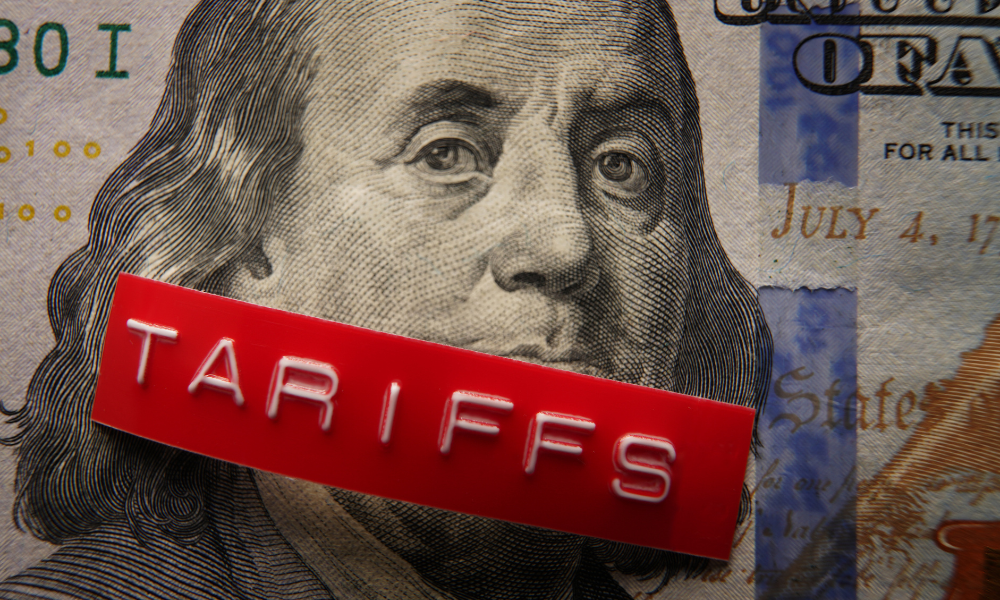

by Jennifer A. Dlouhy
President Donald Trump said he would be imposing both broad reciprocal tariffs and additional sector-specific tariffs on April 2.
Trump told reporters aboard Air Force One that “in certain cases, both” types of levies would be placed on foreign goods imported to the US.
“They charge us and we charge them and then in addition to that on autos on steel on aluminum we are going to have additional tariffs,” Trump said on Sunday.
The remarks signal that Trump plans to press ahead with a more aggressive tariff regime, despite initial moves roiling financial markets and straining alliances.
Trump has previously said that his administration is preparing what he’s dubbed reciprocal tariffs — which would hit imports from each country with a tariff rate determined based on a calculation incorporating its own tariff and non-tariff barriers.
But the president has also said he wants to prepare key US industries, including automobiles, steel, aluminum, microprocessors, and pharmaceuticals. It hasn’t been clear whether those sectoral tariffs would be incorporated into or added on top of the reciprocal tariff regime.
“April 2 is a liberating day for our country,” Trump said. “We’re getting back some of the wealth that very, very foolish presidents gave away because they had no clue what they were doing.”
Trump has already imposed a 20% tariff rate in China, as well as a 25% levy on steel and aluminum. He also announced a 25% tariff on Canadian and Mexican goods, but subsequently offered a one-month extension for goods compliant with the North American trade deal, known as USMCA, negotiated during his first term. Trump has also said Canadian energy and potash, a key fertilizer, would only be hit with a 10% tax.
Copyright Bloomberg News

Blue Anchor Capital Management and Pickett also purchased “highly aggressive and volatile” securities, according to the order.

Reshuffle provides strong indication of where the regulator's priorities now lie.

Goldman Sachs Asset Management report reveals sharpened focus on annuities.

Ahead of Father's Day, InvestmentNews speaks with Andrew Crowell.

Cerulli research finds nearly two-thirds of active retirement plan participants are unadvised, opening a potential engagement opportunity.
Barely a decade old, registered index-linked annuities have quickly surged in popularity, thanks to their unique blend of protection and growth potential—an appealing option for investors looking to chart a steadier course through today’s choppy market waters, says Myles Lambert, Brighthouse Financial.
How intelliflo aims to solve advisors' top tech headaches—without sacrificing the personal touch clients crave
